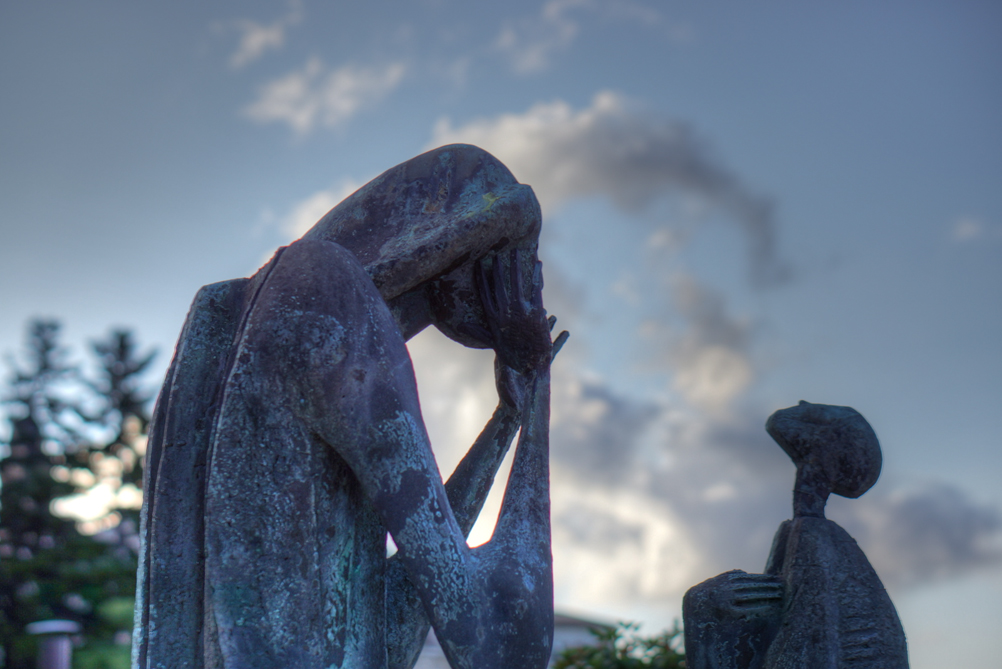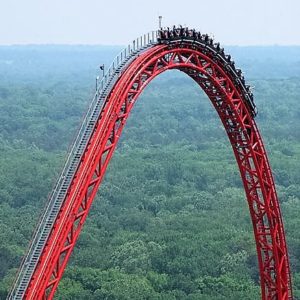by Alan Briskin | Collective Wisdom
As many of you know, I have been writing about the social and unconscious dynamics behind the U.S. Presidential election of 2016. This final post before the election is more of a meditation and prayer. Please read and forward to as many people that might benefit from reading it.
Read my latest Huffington Post article. A Prayer for Tuesday

And please remember to LIKE, COMMENT, SHARE, and DISCUSS with friends. It is through generous acts of sharing the ideas you value that our collective conversations deepen and bear fruit.
by Alan Briskin | Collective Wisdom

(This post was also published on The Huffington Post)
Introduction / Part One / Part Two / Part Three / Part Four
In Parts I through III, I summarized how our educational system was designed to advance less than a third of our population toward a bachelor’s degree and that the economic consequences for those without a bachelor’s degree were significant. Beginning in the 1970s, not only were the economic opportunities for less educated citizens more scarce, but the wages for these lower-level jobs stagnated, debt mounted, and the disparities between the wealthy and the poor exploded. And from this economic and social context grew a sense of displacement among the white working class and a growing hostility toward the “other.”
***
How does one get beyond the surface events to the underlying dis-eases that flow, capillary-like, through the body of the collective? One counter-intuitive approach, highlighted under the general academic umbrella of sense-making, is to observe an extreme example of an attitude or belief and then trace it to its more conventional contexts.
The example I will use involves an independent candidate’s campaign for congressional office in Tennessee in June 2016. The candidate, Rick Tyler, running for the 3rd Congressional District, posted signs reading “Make America White Again” and a second poster, which had an image of the U.S. Capitol surrounded by Confederate flags with the caption “I Have a Dream.” He defended his strategy by saying he thought there was nothing hateful about the campaign posters; he was only being “provocative.”
Read More
by Alan Briskin | Collective Wisdom

(This post was also published on The Huffington Post)
Introduction / Part One / Part Two / Part Three / Part Four
From Part II:
Prosperity was not disappearing from the American landscape, but simply shifting. In roughly the same 30-year period when growth in workers’ wages was slowing down to a crawl, individual wealth became so concentrated that the 400 richest billionaires in the United States had an accumulated wealth equal to half that of the U.S. population (150 million people).
The staggering inequities of wealth were captured in the rising ratios between CEO pay and average annual wages for nonsupervisory labor — 20:1 in the early 1970s, doubling by the end of the decade, and then continuing on a Mount Everest–like climb to 376:1 by 2000. To put this in perspective, the average CEO compensation in 2007 was $18.8 million, compared with $31,000 for the average worker with only a high school degree and $15,000 for a minimum-wage job — a ratio of 1,253:1.
If these numbers aren’t troubling enough, the great recession in 2008 appeared proof that no one, even the wealthy, was minding the store. A shift in perception was taking place in the collective from a belief that success was a function of merit and effort to a recognition that the system was rigged.
***
The tragic consequences of these historical developments are now being visited upon us in illness, suicide, racial division, and the emergence of demagogic leaders, most notably Donald Trump. In the past year, data has been unearthed that reveals just how serious and widespread the damage has been.
While trying to discover links between well-being and suicide rates, two Princeton economists, Angus Deaton and Anne Case, stumbled onto some harrowing statistics. Analyzing health and mortality data during the period of 1999 to 2014, they discovered skyrocketing levels of suicide, liver disease from alcoholism, and deaths from heroin and prescription opioids in one particular demographic group above all others: 45-to-54-year-old whites with a high school education or less.
To put this in starker terms, white Americans with a high school degree or less are now dying in epidemic proportions from what can only be described as despair. In that group of Americans, 45-to-54-year-old whites, death rates rose by 22% while falling for those with a college education. Death rates also declined for middle-aged blacks and Hispanics as well as for younger and older people of all races and ethnic groups. But not for this particular group of white Americans. Dr. Deaton could think of only one parallel example: “Only HIV/AIDS in contemporary times has done anything like this.”
Read More
by Alan Briskin | Collective Wisdom

(This post was also published on The Huffington Post)
Introduction / Part One / Part Two / Part Three / Part Four
Somehow we have arrived at a moment in time when the entrance of a perceived tough and cunning figure with no need to talk in full sentences has become the advent of a savior, or at least a version of one from the bowels of World Wide Wrestling. What kind of savior is this? What collective pain can account for something so bizarre that if someone told me this was occurring in a parallel universe, I would ask how it was possible?
And so I did. I began asking what was behind the media’s focus on the angry white electorate, as if anger somehow explained the collective pull toward driving off a cliff and yelling “Freedom!”
* **
The starting place for me was learning just how few of us, white or minority, have a college education. And how without a college education, one is set upon by the wolves of illness, debt, and unemployment. How could this be? How is it that a college degree, though barely a starting point to get by in today’s economy, is beyond the reach of so many?
One hundred years ago, it was a novel idea that all children should go to high school. It wasn’t until 1930 that most children did. But, as Bill Gates has pointed out, high schools were never designed to send children onward to a bachelor’s degree. They were designed to prepare a workforce that could follow rules designed for factories and the emerging industrial economy. And high schools met the low bar that was expected of them.
Read More
by Alan Briskin | Collective Wisdom

(This post was also published on The Huffington Post)
Introduction / Part One / Part Two / Part Three / Part Four
If a man going down into a river, swollen and swiftly flowing, is carried away by the current, how can he help others across? — Buddha
Racism, nativism, xenophobia — and Donald Trump, oh my! Novelist Richard North Patterson summarizes the current situation we face: “Trump personifies a fear and hatred of ‘the other’ embodied by some of our history’s more frightening and despicable figures: Father Coughlin, Joseph McCarthy, George Wallace. This has led to some of our most shameful chapters — lynchings, anti-immigrant violence, the internment of Japanese-Americans. Because such tragedies are so searing, we view them as unique. But they do not arise from nowhere. Nor did Donald Trump.”
Indeed. Fear of the other, authoritarian responses to social unrest, and the rise of demagogues do not appear from nowhere. They are historical forces, angry ghosts lingering from our collective past. And at the heart of these forces is often an individual’s tribal identification with a group, an identification so powerful it can often take precedence over an individual’s own safety and lead to support of sociopathic leaders promising the tribe’s survival and ultimate victory. In the United States, we are witnessing an upsurge of this tribal identification with the candidacy of Donald Trump. We are also witnessing associated ideologies revolving around tribal beliefs of white superiority, rooted in the notion that white Europeans are responsible for civilization and therefore worthy of respect above all others. And this belief did not come out of nowhere.
Read More
by Alan Briskin | Collective Wisdom

(This post was also published on The Huffington Post)
Introduction / Part One / Part Two / Part Three / Part Four
Mathematician and visionary Arthur M. Young introduced his book The Geometry of Meaning with the enigmatic words “All meaning is an angle.”
Does meaning emerge from the tension of varying angles of perception? And if this is true, what angle of inquiry might be worthwhile to pursue?
In this new series of posts (in four parts over the next 12 days), I explore an angle of inquiry that is working its way into collective consciousness — the confrontation with shadow and its meaning for a new narrative based on inclusion, wholeness, spirit, and sustainable systems.
The shadow is personified by the emergence of Donald Trump, whose narcissism, sociopathic disposition, and lack of discipline have unnerved even traditional Republican Party loyalists. Many in the progressive community are breathing a sigh of relief that such a disorganized, vacillating, and bigoted figure could not possibly win the election. Yet, it is sobering to remember that, even as pundits ponder that he actually wants to lose the election, his polling hovers at 40% of the electorate, and he remains in striking distance of his Democratic opponent. The angle of justification that “he’s not perfect but we need him to shake things up” remains a viable political perspective for many.
In what might seem a separate universe, the growing movement for “a world that works for all” is also active, a grassroots phenomenon that is revealing itself in innumerable projects that seek economic and social justice. In a few days, I will be co-hosting a conference in Germany called “Leading as Sacred Practice.” It is but one example of efforts aimed at linking self-awareness and social awareness as two interconnected phenomena.
I hope to provoke in this new series of posts a further understanding of shadow as having a collective element. Although the shadow, as described by Jung, has been understood mostly in personal psychological terms, its greater meaning lies in the collective social field. And to understand what is stirred up in the collective, we must go beyond the individual to the tribal and spiritual elements of human behavior. To do so risks some personal discomfort, as our current understanding is challenged, but the reward is an expanded angle of comprehension and a deeper regard for the intermingling of the social and the sacred. To be satisfied with demonizing Trump risks aborting a critical opportunity for learning about the collective situation we face.
Finally, I want to offer a reframe for the meaning of descent. It can refer to a movement downward, even a sudden violent attack. It can also refer to origins, such as the background of a person’s family or nationality. All these meanings show up in my writing, but it is the angle of descent that concerns me. If the descent is too extreme, meaning unconscious, it can indeed result in a violent end. However, if the descent allows us to penetrate into the depths of our situation, and we return with greater consciousness, then we will be able to see our situation with new eyes and contribute to our world with new understanding. This is the journey we are all on, managing the boundary between conscious and unconscious awareness. Let it be a joyful one, opening the soul’s eyes, embracing multiple perspectives, and joining the company of those we most value and respect.



